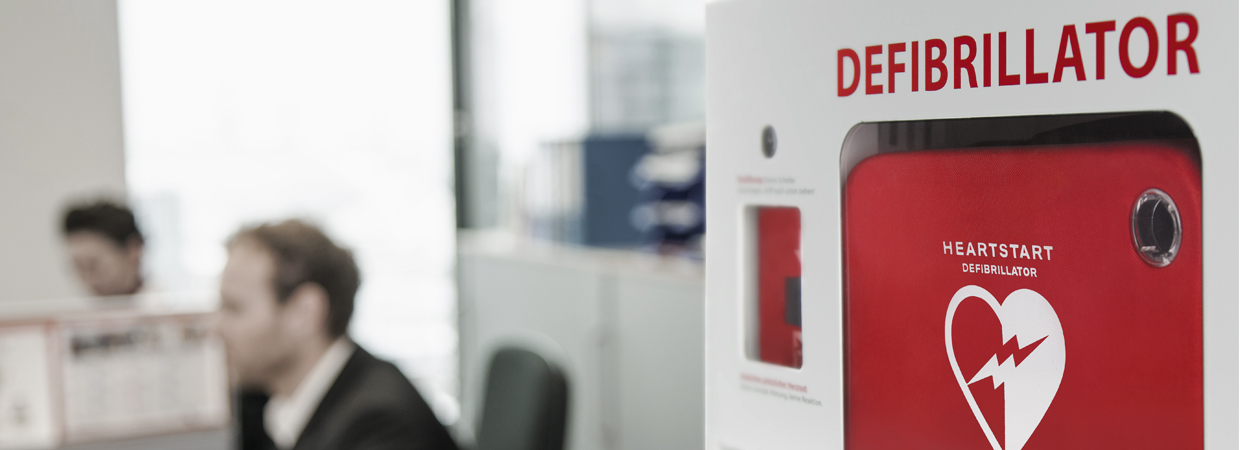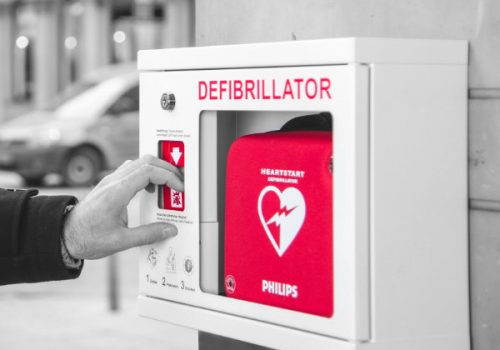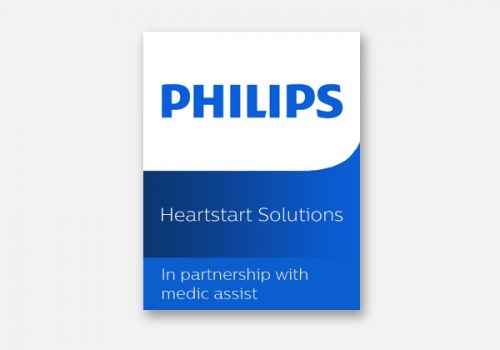Trusted Technology
Reliable technology with personalized therapy and quick shock delivery
Studies have shown that HeartStart Automated External Defibrillators (AED) are designed to be the easiest to use and most reliable.1-5 They are among the fastest in class with confident shock delivery within 8 seconds. Effective analysis and shock delivery is proven by more than 40 published, peer-reviewed studies. The patented, scientifically validated low-energy therapy follows the current recommendations of the ERC (European Resuscitation Council) and the AHA (American Heart Association) and is adapted to the individual patient.
Easy and safe 1-2-3 operation
Philips HeartStart AEDs are made for people who have never used a defibrillator before. They are easy and safe to use and include automatic Life Guidance features like adaptive voice prompts and CPR coaching to help guide through the treatment of sudden cardiac arrest.
With three simple steps every first responder can help save lives:
- switch on
- stick pads
- trigger shock delivery
Clear voice prompts adapted to the pace of the first responder are designed to provide the confidence to act quickly and decisively.
“HeartStart Automated External Defibrillators (AED) are designed to be the easiest to use and most reliable.”1-5
References:
1) Andre A, et al. Automated External Defibrillator Use by Untrained Bystanders: Can the Public-use Model Work? Prehospital Emergency Care 2004;8:284-291. 2) Mosesso Jr. V, et al. Effects ofAED device features on performance by untrained laypersons. Resuscitation 2009;80:1285-1289. 3) Fleischhackl R, et al. Differing operational outcomes with six commercially available automated external defibrillators. Resuscitation 2004:62:167-174. 4) Eames P, et al. Comparison of ease of use of three automated external defibrillators by untrained lay people. Resuscitation 2003;58:25-30. 5) Shortening the interval between the last compression and the shock even by a few seconds can improve shock success (defibrillation and ROSC)” – American Heart Association. American Heart Association Guidelines for Cardiopulmonary Resuscitation and Emergency Cardiovascular Care Circulation. 2010;122 (suppl 3): S706-S719.




